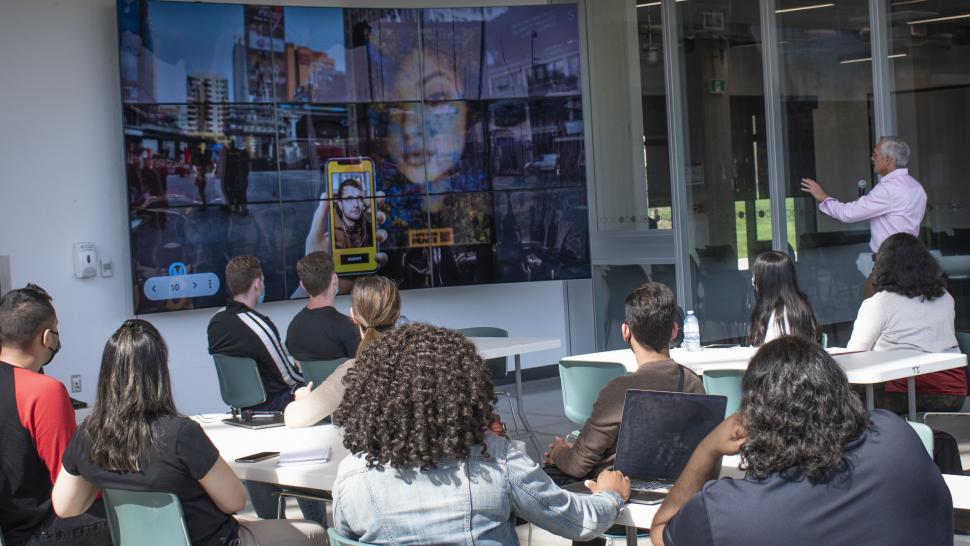
When Villamedia brought its AI-driven generative art project Vote for Peace to Humber College earlier this month, you could call it a mutually beneficial experience.
For more than 40 Humber students from multiple programs, it was a chance to learn about an emerging technology and gain valuable industry exposure while also working with their peers to provide comments and suggestions on the project.
For Villamedia, it was an opportunity to spread the word about its technology that’s being used for social good while also receiving constructive feedback from the students.
Larisa Duravetz, manager of placements and international initiatives with the Faculty of Media & Creative Arts, called it an excellent experiential learning opportunity for the students who came from a variety of programs including Web Development, User Experience Design, Digital Communications, Advertising and Marketing Communications and Photography.
On May 12, Villamedia showcased Vote for Peace in the atrium of the Barrett Centre for Technology Innovation.
Vote for Peace uses interactive generative art in public spaces to support a global social media movement for peace. Sebastian Villa, vice-president of technology and co-founder of Villamedia, said the idea for the project came about following the Russian invasion of Ukraine.
Individuals use a phone to scan a QR code that brings them to a mobile interface that prompts them to cast a vote for peace. It then allows them to upload their own picture, which becomes part of a perpetual canvas that’s displayed on screens as a piece of generative art. The user receives a copy of the artwork on their phone that they can share on social media with the hashtag #VoteForPeace to continue to drive the campaign online.
There’s also an opportunity to donate to the Canadian Red Cross and learn more about other issues happening around the world.
“Peace has been illusive and fleeting since history began,” said Bob Izsak, vice-president of business development at Villamedia. “But we believe that it is only through peace and global cooperation that we will solve the many humanitarian issues facing us today.”
The students interacted with the technology, discussed the future of immersive marketing, learned more about the cloud-based campaign management platform that enables these types of experiences, explored the public relations work being done to drive participation in the project and heard from Villamedia about what it takes to create a social movement.
They provided their thoughts and opinions and were also tasked with a group assignment in which they would use their skills and knowledge to conceptualize other ways the technology can be used for social good.
"It wasn't just a presentation for students as the purpose was to provide valuable feedback on the technology and ways to potentially improve it,” said Duravetz. “Students really played a key role in that."
"It was a chance to think critically and solve problems while also giving constructive feedback and these are really important skills for the students as they prepare to move into the workplace,” Duravetz continued.
Villa previously taught advanced programming at Humber and still has fond memories of his time there.
"I used to love teaching at Humber,” said Villa. “I loved being connected with the students and being around the new generation shaping the future of technology."
He felt bringing Vote for Peace to preview for the students would be a good opportunity to hear their thoughts and said they received some highly valuable responses.
“We got some great feedback from the students. It was also a great opportunity to introduce them to our technology and inspire them to explore the exciting possibilities,” said Villa.